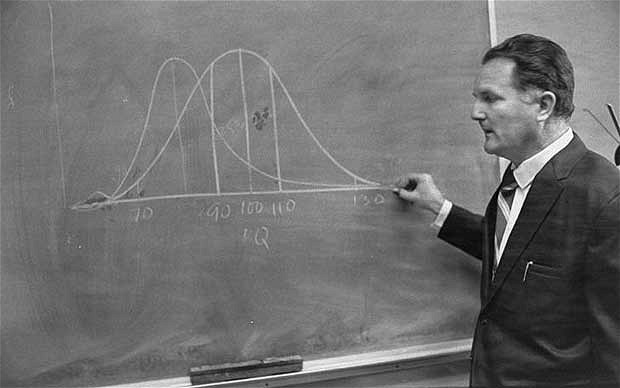Posted on October 29, 2012
American Renaissance, August and September 1992
American Renaissance: You are probably most famous, still, for that
Harvard Educational Review article.
Prof. Jensen: That’s true, yes. I think that’s probably one of the most over-cited articles in the history of psychology.
AR: Well, I’ve always assumed that article got the incredible amount of attention that it did because this was really the first time after the Second World War that someone had stated that there could very well be a genetic factor that accounts for the difference in black and white achievement...
AR: Well, it seems to me that if there are two racial groups that can live side by side in harmony, it appears to be whites and Asians...
Jensen: That may be true. But again, I’m wondering about the degree to which differences in basic characteristics may be at the basis of that. Where the differences in basic characteristics are not conspicuous, as in the case of Asians and whites, and when persons can fit in and do the same kinds of jobs and do them as well as anyone else, it may work. See, there are blacks who fit in this way too — who do all right.
But the black population in this country is in a sense burdened by the large number of persons who are at a level of g that is no longer very relevant to a highly industrialized, technological society. Once you get below IQs of 80 or 75, which is the cut-off for mental retardation in the California School System, children are put into special classes.
These persons are not really educable up to a level for which there’s any economic demand. The question is, what do you do about them? They have higher birth-rates than the other end of the distribution.
People are shocked and disbelieving when you tell them that about one in four blacks in our population are in that category — below 75.
A 1992 interview with Jared Taylor.

www.amren.com


